Jason Schreier’s new book Play Nice: The Rise, Fall, and Future of Blizzard Entertainment reads like a eulogy written by the wrong priest. It’s reverent, selective, and ultimately dishonest—not because Schreier lies, but because he refuses to tell the full truth. As a 20-year video game critic who watched Blizzard evolve from mythic titan to ideological husk, I’ve followed this story far more closely than Schreier’s curated chorus of HR sources, labor activists, and DEI evangelists.
The real story of Blizzard’s collapse is not about crunch, lawsuits, or a toxic “frat boy” culture. Those are symptoms. The disease—the real infection Schreier refuses to name—is progressive ideology. The moment Blizzard stopped being a studio of men building worlds for men, and started being a platform for gender quotas and virtue signaling, its creative soul died.
Schreier’s book ignores this rot. He buries the company’s ideological capture under layers of labor reporting and sanitized retrospectives. He never asks why World of Warcraft Classic exploded in popularity. He never asks why Blizzard lost creators like Chris Metzen or the confidence of fans like Asmongold. And he certainly never asks what happens to a studio when its priority shifts from greatness to guilt management. This isn’t just journalistic bias. It’s a cultural cover-up. And Play Nice is its latest artifact.
The Myth of the Frat House
One of Schreier’s central claims is that Blizzard was undone by its own toxic masculinity—a cartoonish image of beer-swilling, joke-cracking developers who ignored HR and enabled harassment. But this framing omits a key truth: Blizzard’s “frat house” was not dysfunctional. It was elite.
The original Blizzard culture was intensely masculine, competitive, and creatively focused. It was also wildly successful. That all-male studio culture produced Warcraft, StarCraft, Diablo, and World of Warcraft—four of the most iconic and influential franchises in gaming history. It wasn’t broken. It was brilliant.
The real break came when progressive ideology entered the studio and rewrote the rulebook. Suddenly, jokes became microaggressions. Ambition became toxicity. Male camaraderie became suspect. And the same high-achieving male devs who built the empire were now liabilities in an HR system designed to punish the past and elevate the unqualified.
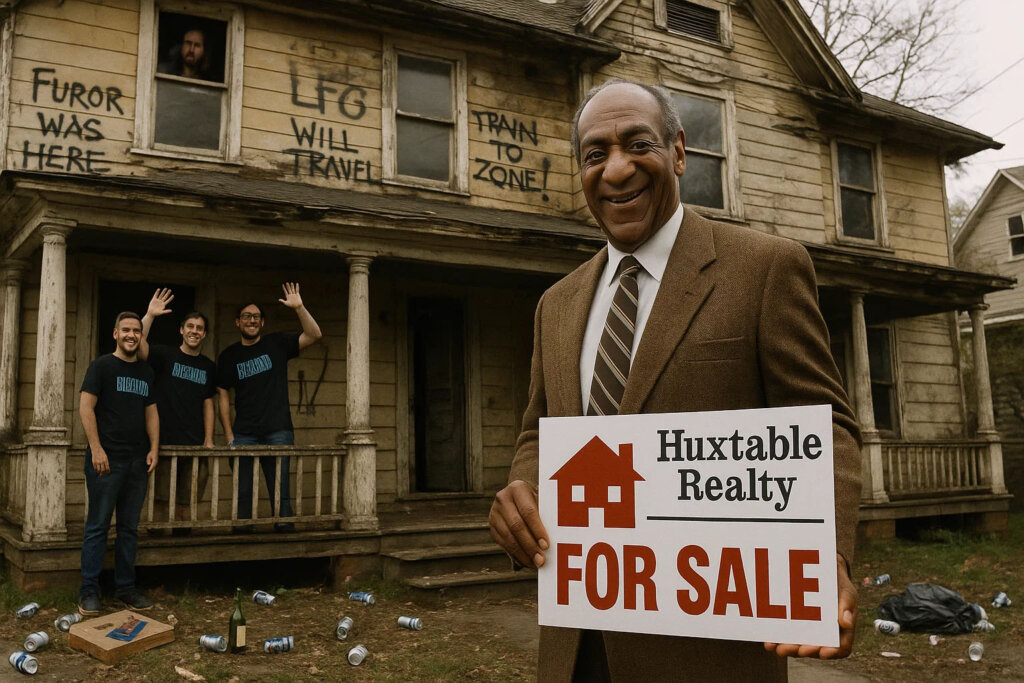
In Schreier’s telling, Blizzard’s golden age was merely a prelude to its well-deserved moral correction. But that correction destroyed the company. And the fans know it.
The Cosby Suite: Journalism or Just-So Storytelling?
One of the most glaring omissions in Play Nice is Jason Schreier’s refusal to interrogate the foundational scandal that helped fuel Blizzard’s fall: the so-called “Cosby Suite.” Rather than investigate the context or question the media framing, Schreier accepts the story wholesale. The Cosby Suite becomes another bullet point in the indictment—proof, in his view, that Blizzard’s old guard was steeped in sexism and predation.
But what if that story isn’t true?
I say this not as a contrarian, but as someone who spent many hours—before AI, before the mainstream media piled on—investigating the actual evidence. I published two in-depth articles challenging the official narrative:
- Challenging the Official Activision Blizzard Cosby Suite Narrative
- Exclusive Unpublished Cosby Suite Photo from BlizzCon 2013 Raises Inconvenient Questions
I examined photos, event timelines, and the social context of the infamous 2013 BlizzCon gathering. What I found was far from the salacious HR scandal reported by Kotaku and repeated uncritically in Play Nice. The so-called “suite” was a common nickname for a room based on the look of Bill Cosby’s sweaters, used ironically and in jest by developers during a time when Cosby was still widely considered a benign cultural figure. There was no evidence that it was used as a predatory lair.
Jason Schreier never reached out to me. He never acknowledged that anyone had seriously questioned the narrative. He simply repeated it.
That’s not journalism. That’s mythmaking.
The Cosby Suite story served a purpose: it became the emotional linchpin for the idea that Blizzard was rotten to its core and needed purging. It gave cover for a new ideological regime to move in—DEI officers, HR expansions, and social media activists with a foot in the door. And Jason Schreier, whether knowingly or not, acted as their herald.
The WoW Classic Effect: What Jason Won’t Say
Another glaring omission is the absence of Mark Kern, former Blizzard producer of World of Warcraft, from Schreier’s book. Kern confirmed on X that he was never contacted for an interview by Schreier, despite his key role in shaping Blizzard’s most influential title. More importantly, Kern was instrumental in persuading Mike Morhaime to greenlight WoW Classic—a fact that reshaped Blizzard’s fortunes and revitalized its player base.
Ignoring someone with Kern’s direct insight and legacy isn’t just an oversight. It’s a decision that undermines the credibility of any so-called definitive history of Blizzard.
If Blizzard’s early culture was so problematic, why was World of Warcraft Classic one of the company’s most successful projects in years?
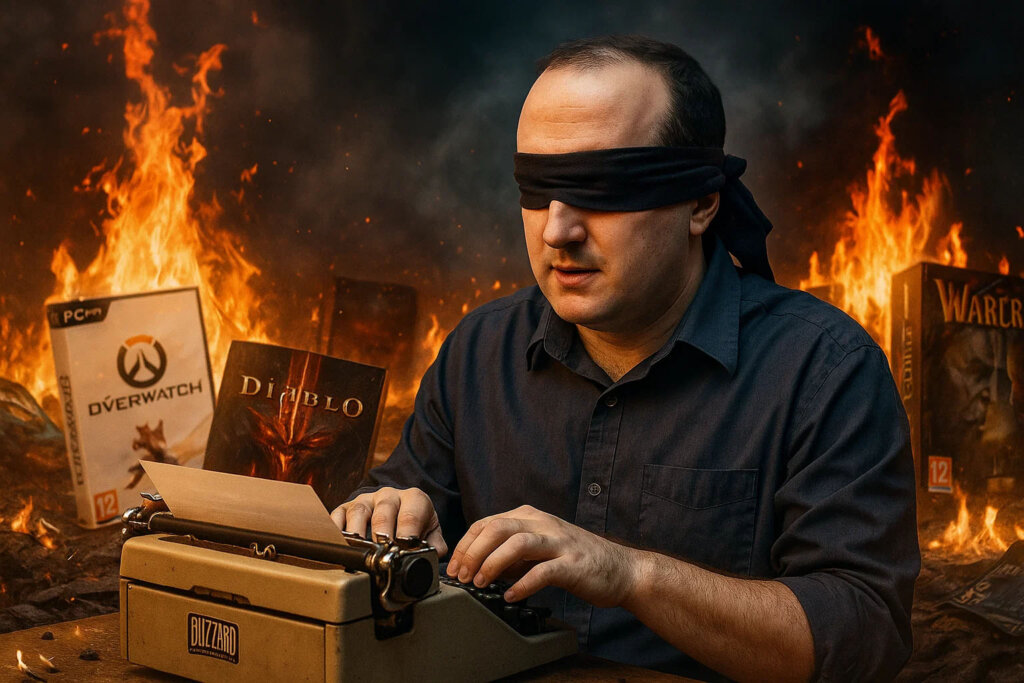
This is the question Schreier never asks—because the answer would undermine his thesis. WoW Classic was a return to form: a revival of the masculine, unapologetic, challenge-driven ethos that made Blizzard great. It wasn’t about inclusion. It wasn’t about safety. It was about immersion, danger, and a sense of earned belonging in a virtual world that didn’t care about your feelings.
Men loved it. Millions returned. Streamers like Asmongold rose to prominence because they tapped into that lost energy—the energy of real stakes, real conflict, and a game world uncorrupted by HR departments and Twitter mobs.
Schreier never acknowledges this. To do so would require admitting that Blizzard’s decline wasn’t about too little oversight. It was about too much.
DEI and the Feminization of Warcraft
As Blizzard embraced diversity, equity, and inclusion initiatives, the impact showed up not just in hiring, but in the games themselves. World of Warcraft became increasingly self-conscious, sanitized, and narratively neutered.
The once gritty, dangerous world of Azeroth now lectures players about identity and tolerance. Strong male characters were sidelined or softened. Female characters were remodeled and rewritten to meet evolving DEI standards. Quests that once challenged players with moral ambiguity now present one-note morality tales in line with the latest HR training video.

This isn’t evolution. It’s ideological colonization.
Schreier doesn’t critique these changes because he doesn’t see them as political. For him, they are progress by definition. But for longtime fans—especially men who grew up with WoW—the game no longer feels like it was made for them. Because it wasn’t.
When Employee Networks Shape the Game
One of the most shocking evolutions in Blizzard’s internal structure is the increasing influence of DEI and LGBTQ+ employee networks on game content. What used to be a studio run by developers is now beholden to internal advocacy groups with explicit ideological agendas. These so-called Employee Resource Groups (ERGs) aren’t just providing feedback—they’re helping shape the worlds, characters, and narratives of Blizzard games.
Blizzard’s LGBTQ+ Employee Network, for instance, has directly influenced in-game representation and partnered with leadership on initiatives like the Pride Collection and LGBTQ-themed storylines. DEI groups work with development teams and the Inclusive Game Design (IGD) council to review content for alignment with progressive values. These internal groups have input on everything from character creation to accessibility menus to which cultures are represented and how.
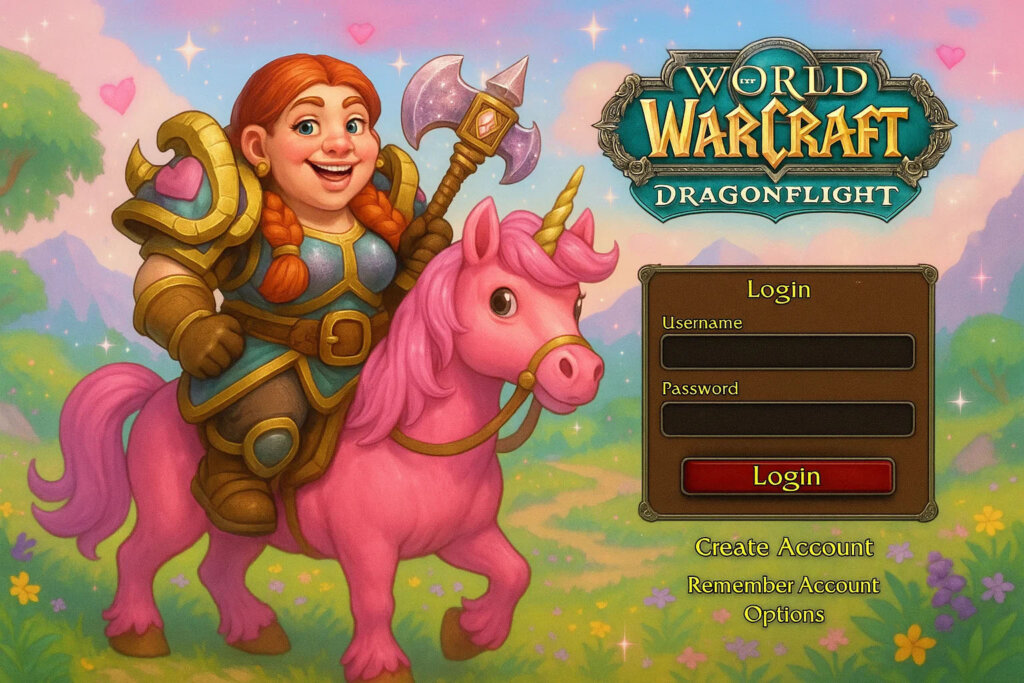
In short, Blizzard now designs games by committee—not of artists, but of ideological auditors.
This is not creative freedom. It’s creative submission. And it shows. World of Warcraft: Dragonflight, a recent expansion praised by GLAAD for its LGBTQ representation, feels less like a fantasy adventure and more like a diversity checklist come to life. Cultural authenticity, once guided by mythic inspiration and player immersion, is now filtered through activist priorities and corporate HR optics.
To make matters worse, in response to backlash, Blizzard rebranded its DEI efforts as “Inclusive Growth”—a cynical name change that attempts to preserve the ideology while shedding the controversy. This is ideological laundering, not reform.
When game studios allow internal political networks to shape creative output, the result isn’t diversity. It’s dilution. Blizzard once made games to thrill players. Now it makes games to appease in-house lobbyists and maintain its perfect Corporate Equality Index score. That’s not just unsustainable. It’s insane.
Robin DiAngelo at Blizzard: The Unreported Extremism
If you want to know just how deep the ideological rot goes at Blizzard, consider this: Robin DiAngelo, the race essentialist behind White Fragility, was invited to speak at the Activision Blizzard campus. While employees were organizing food drives to feed underpaid colleagues, Blizzard was handing out checks to activist groups and hosting seminars on white privilege.
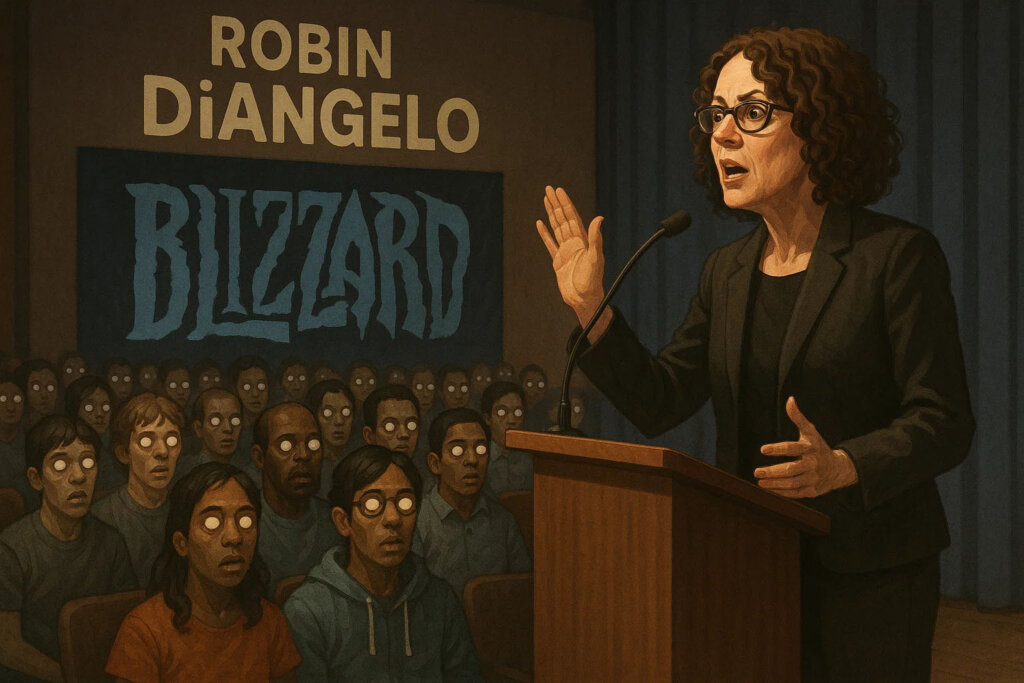
I documented this in detail in a previous exposé:
Employees Go Hungry as Activision Blizzard Gives Millions to Black Activist Groups and Identity Politics Grifters
This wasn’t a diversity workshop. It was a political indoctrination session—one that no major journalist, including Jason Schreier, ever bothered to report. In fact, when I shared this with Grok, even the AI doubted me until I presented my receipts.
DEI at Blizzard isn’t about fairness or inclusion. It’s about ideological capture. And Play Nice whitewashes it all.
Echoes in the Cathedral: Reviewing the Reviewers
If Jason Schreier’s Play Nice is a sanitized gospel of Blizzard’s fall, then the reviews it received are the cathedral choir—echoing the hymn, never questioning the doctrine.
Major outlets praised the book’s “meticulous research” and “engaging storytelling,” but what went unmentioned speaks louder than what was said. Not a single prominent reviewer challenged Schreier’s ideological blind spots. Not one asked why the studio’s creative heart died the moment it embraced DEI as its compass. Not one wondered aloud why Chris Metzen, Mark Kern, and other pillars of the old Blizzard were left out of a book that claims to be definitive.
Take Kirkus Reviews: they lauded the book’s scope while accepting Schreier’s narrative wholesale. The Wall Street Journal called it “a Blizzard of controversy,” but kept the critique safely within business terms—never daring to touch the radioactive core: cultural rot masked as moral progress.
Other reviewers from blogs and gaming forums followed suit. Some nitpicked pacing, others wished Schreier had included more developer anecdotes. But none dared to ask the real question: what if Blizzard didn’t fall because it was toxic, but because it was re-educated?
What you won’t find in any mainstream review is a challenge to Schreier’s moral framing. The “frat house” becomes shorthand for evil. DEI becomes synonymous with virtue. There is no room in these reviews for dissent, or even curiosity. The idea that male camaraderie built greatness—and that HR bureaucracy killed it—is not debated. It is not even acknowledged.
In the end, the reviews are less criticism than confirmation. They reinforce Schreier’s role not as a journalist, but as a cultural priest—administering last rites to an industry he helped convert. And like all good parishioners, the reviewers genuflected on cue.
But truth is not found in echoes. It’s found in silence—the kind that falls when the last good developer walks out of a studio that forgot why it existed.
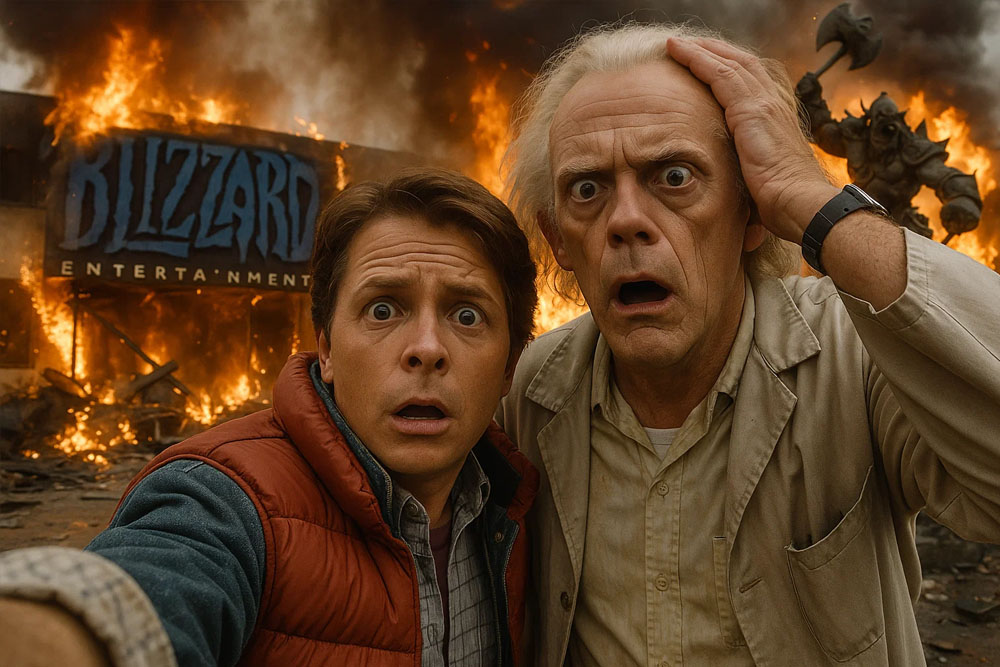
Conclusion: Truth Matters More Than a Narrative
There’s one name Schreier should have examined far more closely: former CEO of Blizzard Entertainment Mike Morhaime. While Schreier notes that the failure of Titan gave Bobby Kotick the leverage to assert more control, he stops short of identifying the deeper root cause. It wasn’t just a failed game—it was a failed philosophy. Morhaime, once the protector of Blizzard’s core values, ultimately opened the gates to DEI ideology and identity-driven hiring. He laid the foundation for the studio’s cultural transformation. The buck stops with him.
This turning point may also have been shaped by internal pressures closer to home. Morhaime had recently married Amy Morhaime, who held multiple promotional and esports-facing roles at Blizzard that many within the company considered superficial or symbolic. While this remains speculative, it is not uncommon in corporate settings for high-ranking executives to offer featherbed positions to spouses or allies. Amy’s influence may have played a role in Mike’s embrace of DEI as a moral or relational imperative, reinforcing his drift from Blizzard’s original balls to the wall masculine culture.
Blizzard’s real downfall began not with scandal, but with arrogance. Flush with success, the studio began to believe in its own myth—that it could do no wrong, that it had the Midas touch. The failure of Titan was the studio’s reckoning. It revealed that Blizzard’s magic was not invincibility—it was culture. A culture of intense male camaraderie, creative risk, and shared vision. Morhaime didn’t just lose confidence in that culture—he dismantled it.
His DEI initiative proved he didn’t understand what made Blizzard great. He didn’t understand the gamer base. And he didn’t understand that by trading the so-called “frat house” for an HR department with ideological veto power, he was setting fire to the golden age he helped build.
What happened is that Blizzard, like much of the industry, traded excellence for ideology. It stopped trusting its audience. It stopped trusting itself. It hired for identity over merit, promoted grievance over greatness, and let HR departments become creative gatekeepers.
Jason Schreier won’t tell you that. But I just did.
—Wolfshead

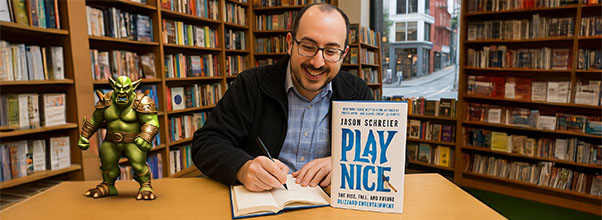



Journalists are nowadays, with ever fewer exceptions, activists. Scheier’s book is an ideological fairytale. There are things that are hard to deny and extremely hard to stomach for promoters of DEI. That these supposedly oh-so evil, vilified guys, were the ones that made World of Warcraft great. The only way to discredit Mark Kern and to protect his “story”, for that is what his book is, a work of ideological fiction, was by complete omission.
There are only few types of DEI warriors: Those who fully know what they are doing are evil, those who don’t fully get it are dumb or very dumb, the third type is perhaps the most disgusting type that is called “Mitläufer” in Germany, the “fellow traveller”.
Also, how the mighty have fallen. The NYT has no longer the renown it once had, but when even Jason Schreier is a NYT Bestselling Author, the bar is incredibly low. How much of his books did Schreier have to buy himself and how many reviewers did he have to bribe. Worst reviews are 3 stars. Oh my.
I rarely brag, but I’m one of the few people doing honest, hard-hitting video game journalism.
Jason Schreier is a fraud and a coward. He’s being propped up by the regime. I exposed his lack of journalistic integrity in this review. He blocks everyone who disagrees with him on X. I believe he’s migrated to Bluesky, where all the communists and LGBTQ degenerates congregate now.
I love writing articles like this. My website is devoted to chronicling the frauds in our industry.